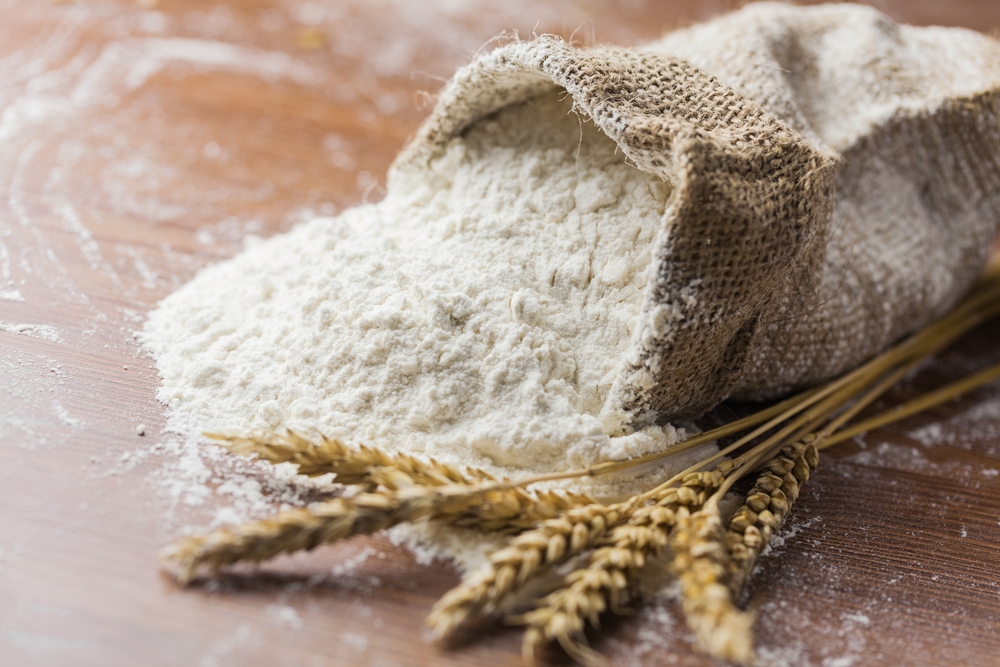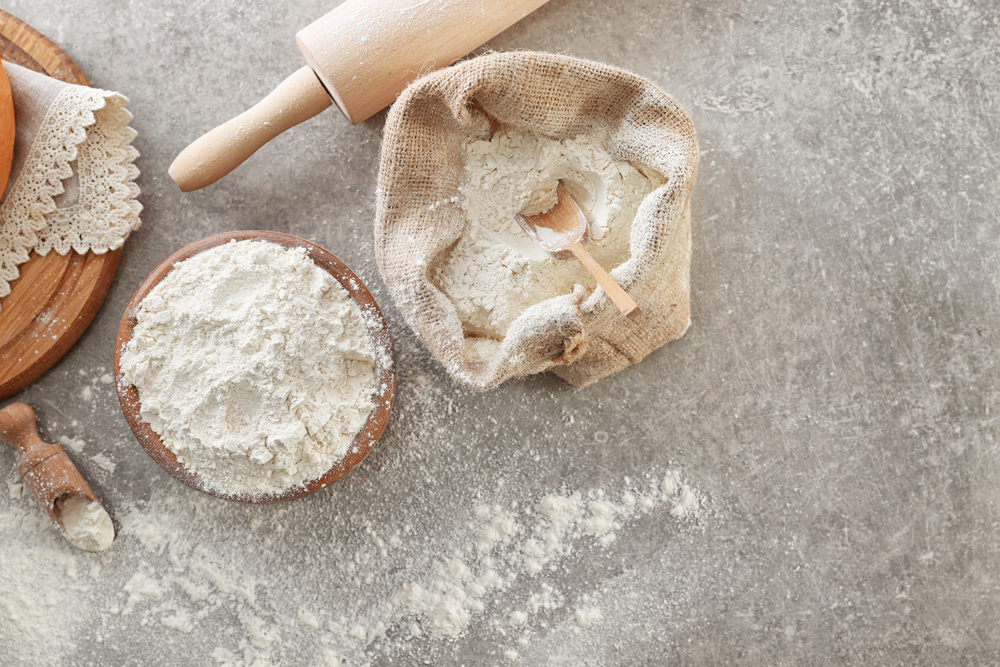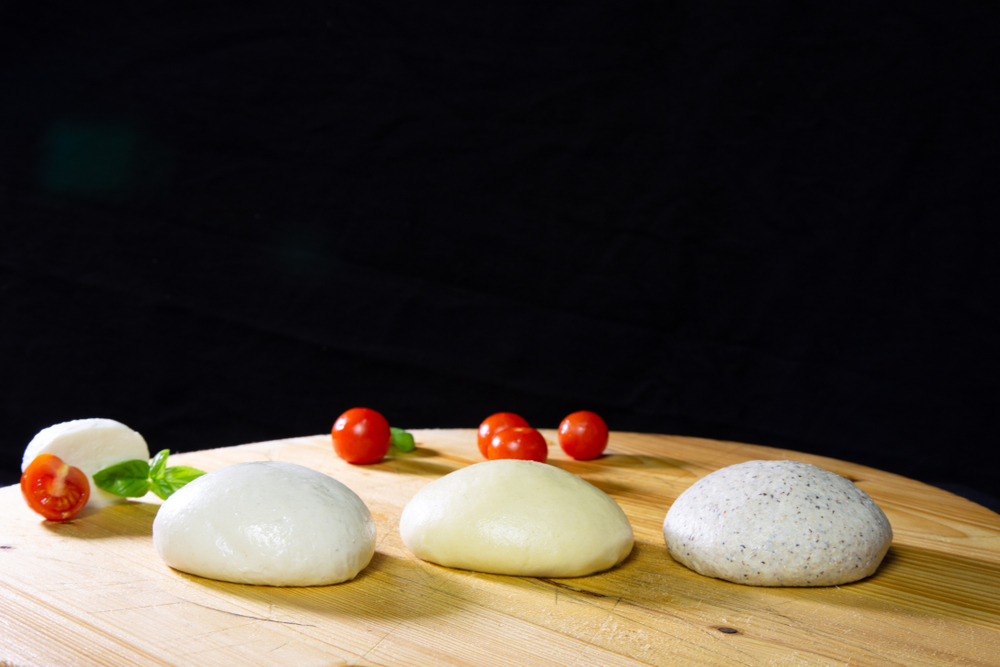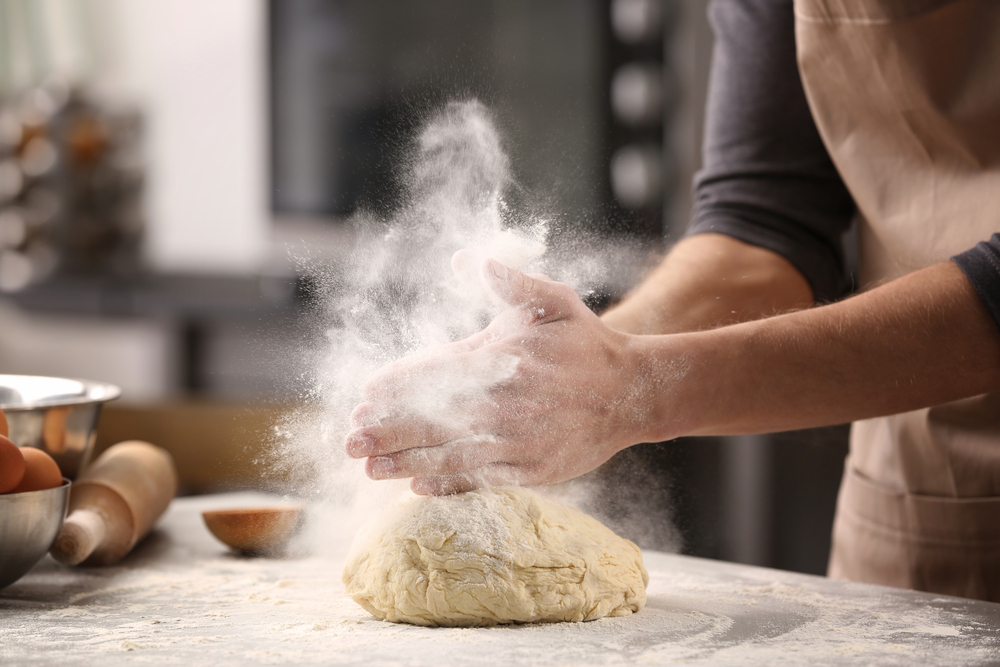Manitoba flour is a variety of flour that has grown in popularity recently, particularly among bakers. The hard wheat used to make this flour is from Manitoba, a province in Canada; thus, the name Manitoba flour.

Because Manitoba flour has a high gluten level and is typically referred to as a “strong” flour, it is a great ingredient for complicated recipes like leavened cakes.
The high protein level of Manitoba flour, which ranges from 13% to 15%, is one of its distinguishing qualities.
Manitoba flour’s strength comes from its high protein content, which also makes it perfect for use in bread and pizza dough.
Furthermore, Manitoba flour has a nutty flavor that gives baked foods a distinctive flavor.
Manitoba flour is a great option if you’re seeking a flour that can create a rich and chewy texture.
Due to its high gluten concentration, it is ideal for recipes that call for extensive kneading and stretching.
Bread, pizza, and bagels are just a few of the dishes that might benefit from the usage of Manitoba flour. It is a versatile flour that may give your baked items a distinctive flavor and texture.
What is Manitoba Flour?
Manitoba flour is a type of wheat flour that is known for its high gluten content. It is made from hard red spring wheat, which is grown in the Canadian province of Manitoba. The flour is also known as farina Manitoba in some regions.

The name “Manitoba” comes from the province where the wheat is grown. Wheat is a variety of common wheat, scientifically known as Triticum aestivum.
It is a hardy crop that can withstand the cold temperatures and short growing seasons of the region.
Manitoba flour is considered a “strong” flour, which means it has a higher protein content than other flour.
This makes it ideal for recipes that require a lot of structure and volume, such as bread and pizza dough. The high gluten content helps the dough to rise and gives it a chewy texture.
In Italy, Manitoba flour is often used in recipes that call for “00” flour, which is a very finely milled flour. Manitoba flour has a coarser texture than “00” flour, but it can be used as a substitute in many recipes.
Overall, Manitoba flour is a versatile and useful ingredient for bakers and cooks. Its high gluten content makes it ideal for many recipes, and its unique flavor and texture can add depth and complexity to a wide range of dishes.
Manitoba Flour vs. Other Flours
When comparing Manitoba flour to other flour, there are a few key differences to keep in mind. In this section, we’ll explore the gluten content, flour strength, and protein content of Manitoba flour compared to other types of flour.

Gluten Content
One of the main differences between Manitoba flour and other flour is its gluten content. Manitoba flour is considered a high-gluten flour, meaning it has a higher percentage of gluten than other types of flour.
Gluten is a protein that gives dough its elasticity and helps it rise.
Flour Strength
Another important factor to consider when comparing Manitoba flour to other flour is flour strength.
Flour strength refers to the ability of flour to absorb and hold water, which affects its ability to rise and create structure in baked goods.
Manitoba flour is a strong flour, meaning it has a high flour strength and can absorb more water than weaker flour.
Protein Content
Finally, protein content is another key difference between Manitoba flour and other flour. Manitoba flour has a higher protein content than all-purpose flour, which is why it’s often used in recipes that require a higher gluten content.
The two main proteins in Manitoba flour are glutenin and gliadin, which combine to form gluten when mixed with water.
Overall, Manitoba flour’s high gluten content, strong flour strength, and high protein content make it a popular choice for baking bread and other baked goods that require a strong, elastic dough.
However, it may not be the best choice for all recipes, as its unique properties can affect the texture and flavor of the finished product.
Uses of Manitoba Flour
Manitoba flour is a type of flour that is primarily used for baking due to its high gluten content. It is a versatile flour that can be used in a variety of recipes, including bread, pizza, pasta, pastry, and cake making.

In this section, we will explore the different uses of Manitoba flour and how it can be incorporated into various recipes.
Baking
Manitoba flour is an excellent choice for baking because of its high gluten content. It is ideal for recipes that require a long leavening time, such as panettone, pandoro, croissants, doughnuts, and rum baba.
Manitoba flour can help these leavened cakes rise well, resulting in a light and fluffy texture. Manitoba flour can also be used to make pizza dough, providing it with elasticity and a chewy texture.
Pizza and Pasta Making
Manitoba flour is a popular choice for making pizza and pasta dough due to its high gluten content. It is commonly used in Italy to make pizza bases and pasta, providing it with an excellent texture and consistency.
Manitoba flour can also be used as a replacement for other types of flour, such as type 00 or type 0 flour. It has excellent absorption power, allowing it to absorb more water than other flours, resulting in a consistent dough.
Bread Making
Manitoba flour is an excellent choice for making bread due to its high gluten content. It is commonly used in the French baguette and Italian bread-making industries, providing the bread with a chewy texture and a crispy crust.
Manitoba flour can also be used to make seitan, a vegetarian meat substitute, due to its high protein content.
Pastry and Cake Making
Manitoba flour is an excellent choice for making pastry and cake due to its high gluten content. It is commonly used by pastry chefs to make delicious pastries, such as croissants, doughnuts, and baba.
Manitoba flour can also be used as a substitute for other types of flour, such as refined white bread flour or rice flour. It provides the pastry with a chewy texture and excellent rise.
Substitutions
If you do not have Manitoba flour, there are several substitutes that you can use. These include cassava flour, almond flour, cake flour, and white whole wheat flour.
However, it is important to note that these flours have different properties and may not provide the same texture and rise as Manitoba flour.
It is also important to note that Manitoba flour is not suitable for people with gluten intolerance or celiac disease.
In conclusion, Manitoba flour is a versatile flour that can be used in a variety of recipes, including bread, pizza, pasta, pastry, and cake making. It has excellent elasticity and absorption power, providing the dough with a consistent texture and rise.
Manitoba flour is a popular choice for professional bakers and pastry chefs due to its high gluten content and excellent baking properties.
Conclusion
In conclusion, Manitoba flour is a type of wheat flour that comes from the Canadian province of Manitoba.
It is known for its high gluten content and strength, making it an excellent ingredient for complex recipes like leavened cakes and bread.
Manitoba flour is milled to a coarser consistency than bread flour, which gives it a denser texture when used in bread recipes.
Manitoba flour’s strength comes from its high protein content and its ability to absorb water. It has a W value of 350 or greater, which is much higher than weaker flours that have a W value of up to 170.
Manitoba flour can absorb water worth 80 percent of its weight, which is significantly more than weaker flours that can only absorb about 50 percent of its weight.
When substituting Manitoba flour for other types of flour, it is important to note that it will produce a denser, less fluffy finished product.
However, it is an excellent choice for recipes that require a higher gluten content, such as pizza dough or bagels.
Overall, Manitoba flour is a versatile ingredient that can add strength and structure to your baked goods. Its unique properties make it a valuable addition to any baker’s pantry.







Add comment